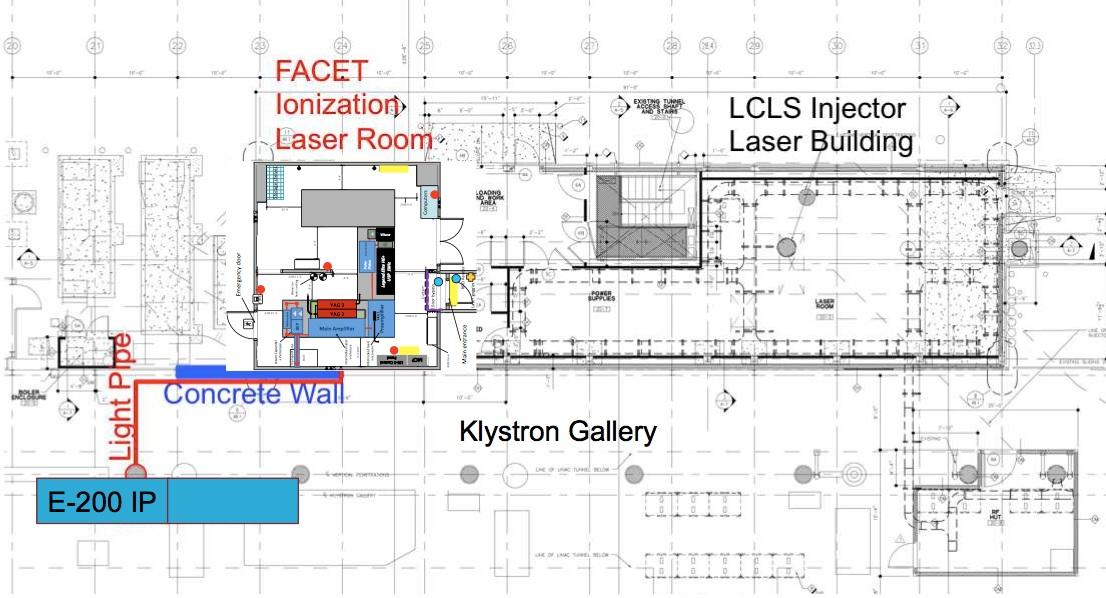Experiment Laser
In 2013, FACET installed a 10 TW Ti:Sapphire laser system. The primary purpose of the laser is to pre-ionise gas to form a plasma for the plasma wakefield acceleration experiments. The laser was subsequently used by a broad range of FACET experiments and for diagnostics.
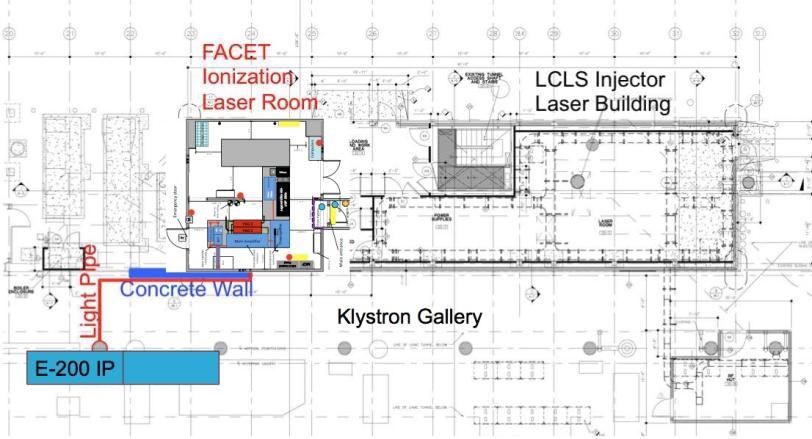
laserrroom.jpg
The laser is in a laser room which is accessible during electron beam operation. The laser output is transported to the accelerator tunnel through an enclosed transport line with lenses and dielectric mirrors. The laser output is compressed and injected into the electron beamline such that it is colinear with the beam. A timing system allows us to lock it to within a few nanoseconds of the beam.
The Ti:Sapphire laser system consists of the following components:
1. Verdi pump laser (resides in Vitara Oscillator), manufactured by Coherent, Inc.
2. Vitara Oscillator, manufactured by Coherent, Inc. 800 nm 20 fs pulses at 68 MHz.
3. Evolution pump laser (resides in Legent Elite regenerative amplifier), manufactured by Coherent, Inc.
4. Legend Elite regenerative amplifier, manufactured by Coherent, Inc.200 ps, 120 Hz.
5. One CFR-200 Flashlamp-Pumped Nd:YAG laser, manufactured by Quantel, for pumping the preamplifier. 130 mJ at 532 nm.
6. Two Saga 2 Flashlamp-Pumped Nd:YAG lasers, manufactured by Thales, for pumping the main amplifier. 2 x 1.8 J at 532 nm.
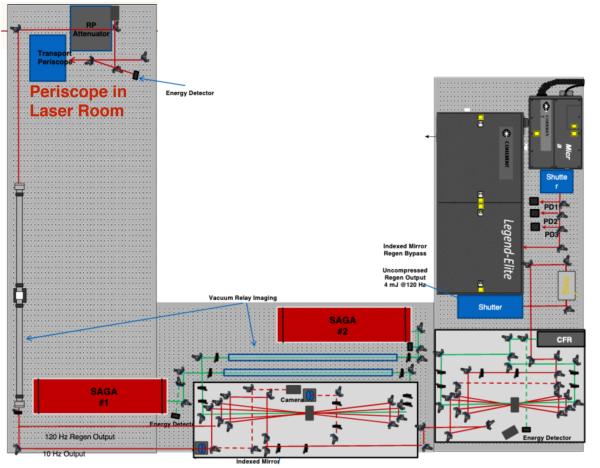
There are approximately 28 meters of transport from the laser in the laser room to the compressor box in the FACET tunnel.
We have an image relaying optical transport system. Dielectric mirrors can be remotely controlled for alignment. Network cameras are mounted behind the mirrors at each bend and look through a viewport at the laser spot on the back of the mirror.

The FACET compressor has a range of 50 fs (most compressed) to 150 ps. Due to high peak power, dielectric mirrors are used.
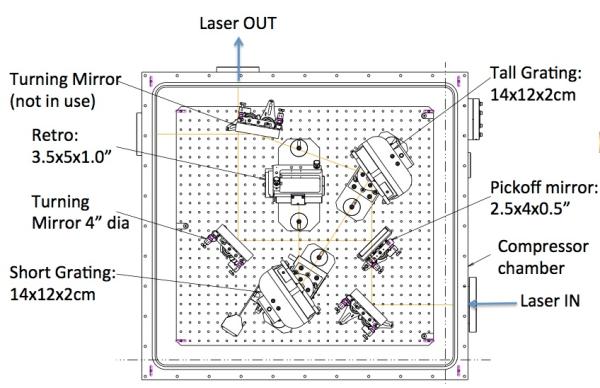
After the compressor, the laser is steered into a vacuum chamber which integrates the laser with the electron beam. The chamber is colloquially called the Picnic Basket due to the way the lids open. A window separates the vacuum of the compressor from the vacuum of the Picnic Basket for experiments that involve plasma or gases.
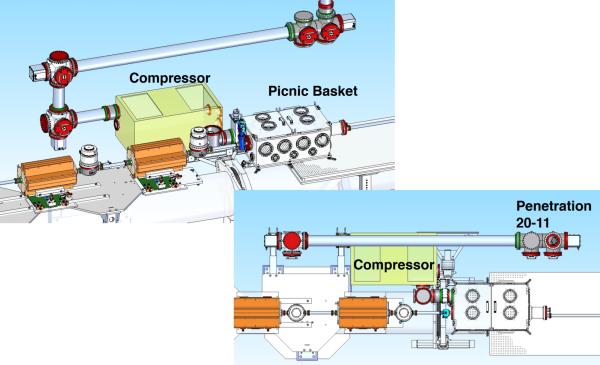
As an example of how experiments use the laser, the E-300 Plasma Wakefield Acceleration experiment uses a gold mirror to steer the beam co-linear with the FACET electron (or positron) beam. The mirror has a 6mm hole in the centre for the electron beam to pass through. The laser beam is 1.5" and an axicon lens is used to focus the laser light to form a narrow plasma channel for the experiment.
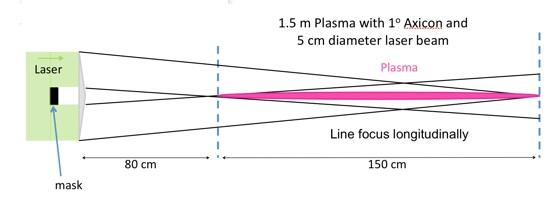
The FACET laser uses an RF synchronization and plase stabilization system developed at SLAC.
Jitter has been measured at 70 fs or better from 10 Hz - 10 kHz. Long term drift (over days) has been estimated at < 2 ps (studies ongoing).
An electro-optic sampling system is being developed by FACET users to give time of arrival information between the electron and laser beam.
For information on laser upgrades and anticipated improved performance, please see a recent presentation from the 2019 Science Workshop.
Photographs of Laser Installation
